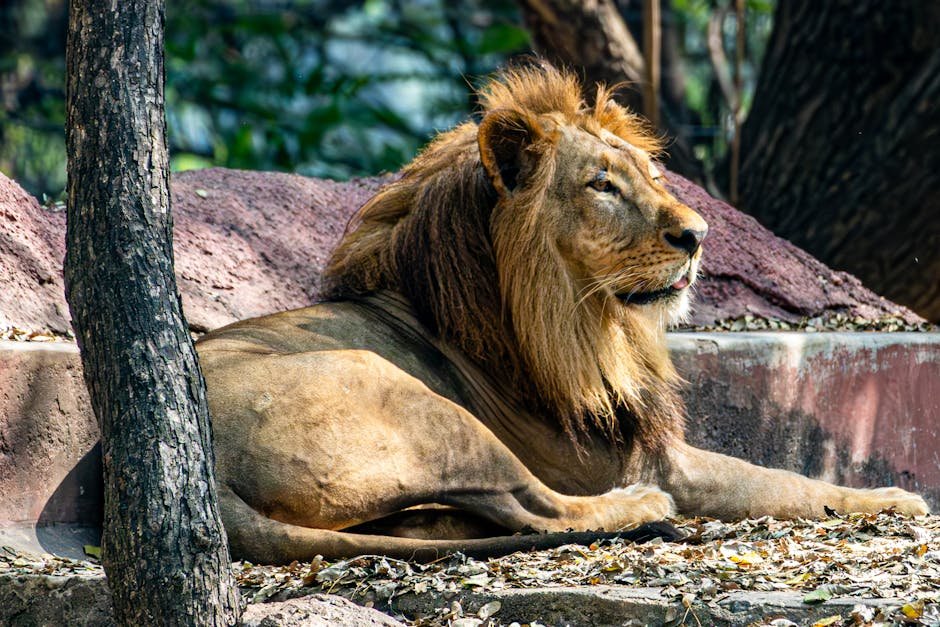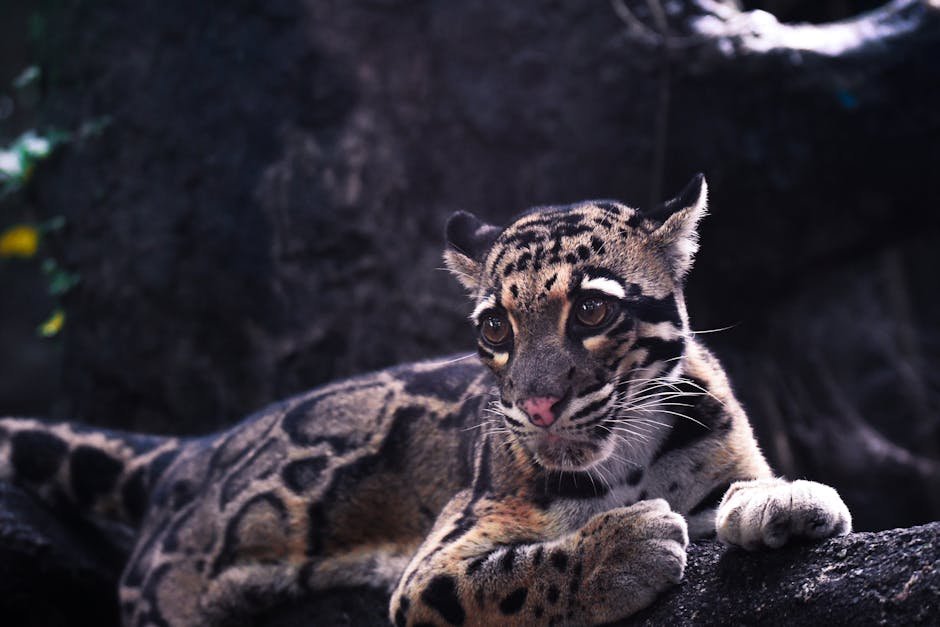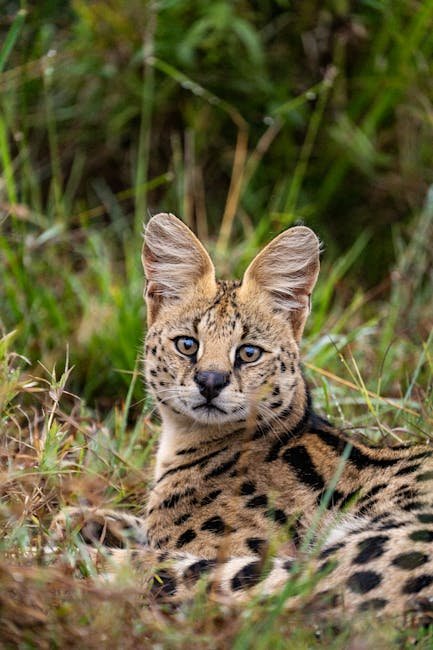In the world of big cats, communication takes on many forms. While most people might think of the powerful roar of a lion, there’s a symphony of sounds that these majestic creatures make. From chirps to growls, each big cat has its own unique way of expressing itself. These vocalizations serve various purposes, from marking territory to calling mates. Let’s dive into the enchanting world of big cat vocalizations and discover what makes each of these 12 big cats stand out.
Lion: The King’s Roar

When you think of a lion, the first thing that probably comes to mind is its mighty roar. This vocalization can be heard up to five miles away, a testament to the lion’s status as the king of the jungle. Roaring serves several purposes: it can warn intruders, communicate with pride members, or simply assert dominance. Interestingly, lions are the only big cats that roar in groups, often creating a chorus that echoes through the savanna. This communal roar strengthens social bonds within the pride. Much like a family gathering, it’s their way of checking in with each other.
Tiger: The Chuffing Whisper
Tigers are known for their powerful growls, but they have a softer side as well. The chuff, a non-threatening vocalization, is a friendly greeting used between tigers. It sounds like a low-frequency puff of air and is often used between mother and cubs or when a tiger is greeting a familiar individual. Chuffing is unique to tigers and reflects their solitary nature, as it helps maintain peaceful relations. Imagine it as the tiger’s equivalent of a gentle handshake or a warm smile.
Cheetah: The Chirping Speedster
Unlike most big cats, cheetahs cannot roar. Instead, they communicate through a series of high-pitched chirps that can sound surprisingly similar to a bird. These chirps are crucial for mother cheetahs to keep track of their cubs in the vast savanna. Each chirp carries a unique frequency that can be identified by the cubs, much like a mother calling her children at a playground. This adaptation is particularly fascinating because it underscores the cheetah’s need for stealth and speed, avoiding the attention that a roar might bring.
Leopard: The Mysterious Sawing Call
Leopards are elusive creatures, often moving silently through their territories. Yet, when they do vocalize, it’s something to behold. Their sawing call resembles the sound of wood being sawed, a series of rough, repeated coughs. This call is used to communicate over long distances, often at night when these cats are most active. The sawing call is a testament to the leopard’s solitary nature, allowing it to establish presence without confrontation. It’s as if they’re whispering their presence into the night air.
Jaguar: The Deep-Throated Growl
In the dense jungles of South America, the jaguar is an apex predator, known for its powerful bite and deep-throated growl. This vocalization is a spine-chilling sound that echoes through the rainforest, establishing dominance and warning other animals of its presence. Jaguars use their growl to intimidate rivals and lure mates, a critical tool in the dense, competitive environment they inhabit. The growl is a reminder of the jaguar’s raw power and the respect it commands in its territory.
Puma: The Eerie Scream
Pumas, also known as mountain lions or cougars, are known for their eerie scream that can send shivers down anyone’s spine. This blood-curdling sound is often mistaken for a human cry, and it’s primarily used during mating season to attract partners. The scream is unique among big cats and reflects the puma’s adaptability across various habitats. It’s a haunting reminder of the wild, echoing across the mountains and forests they call home, and serves as a testament to their solitary nature.
Snow Leopard: The Whistling Whisper
High in the rugged mountains of Central Asia, the snow leopard makes its home. These elusive cats have a unique vocalization: a soft, gentle whistle. This sound is used primarily for mating calls and communication between mothers and cubs. The whistle is a rare sound in the cold, barren landscapes where snow leopards roam, adding a touch of mystery to these shy creatures. It’s as if the snow leopard is whispering secrets to the wind, a delicate contrast to their harsh environment.
Clouded Leopard: The Low Moan

The clouded leopard, with its distinctive coat and tree-dwelling habits, possesses a vocalization that matches its enigmatic nature. Their low moan, a deep, resonant sound, can be heard over long distances in the dense forests of Southeast Asia. This moan serves multiple purposes, from marking territory to finding mates. Much like a foghorn in the mist, it cuts through the dense foliage, announcing the presence of this elusive feline. It’s a haunting sound that reflects the clouded leopard’s mysterious lifestyle.
Caracal: The Barking Cat
With its tufted ears and sleek build, the caracal is often referred to as the “desert lynx.” This agile predator has a surprising vocalization: a bark. This sound is used to communicate with other caracals and during confrontations with rivals. The bark is a sharp, piercing noise that stands out in the quiet desert landscapes where caracals roam. It’s a fascinating adaptation, highlighting the caracal’s role as both a predator and a territorial animal in its harsh environment.
Lynx: The Short Yowl
Lynxes, known for their tufted ears and short tails, have a distinctive vocalization that matches their solitary lifestyle. Their short yowl is a brief, piercing sound used primarily during mating season. This call can be heard echoing through the forests of North America and Eurasia, a testament to the lynx’s elusive nature. The yowl is a subtle yet effective means of communication, allowing lynxes to maintain their solitary existence while ensuring successful reproduction.
Ocelot: The Chirping Feline
In the dense rainforests of South America, the ocelot stands out not only for its striking coat but also for its unique vocalizations. The ocelot’s chirp is a series of short, high-pitched sounds used primarily for communication between mothers and cubs. This gentle vocalization is a stark contrast to the ocelot’s fierce hunting prowess, underscoring the duality of this remarkable feline. The chirp is a reminder of the close bonds these cats share, even in the wild.
Serval: The High-Pitched Call

The serval, with its long legs and large ears, is known for its impressive hunting skills and unique vocalizations. Its high-pitched call, often described as a “squeak,” is used for communication over long distances in the African savanna. This call serves multiple purposes, from locating mates to warning rivals. The serval’s squeak is a fascinating adaptation, perfectly suited to its environment, and highlights the importance of vocal communication in the wild.
In the world of big cats, vocalizations are more than just sounds; they are lifelines that connect these majestic creatures to their environment and each other. Each vocalization is a testament to the rich tapestry of life in the wild, a symphony of survival and communication.

Linnea is a born and bred Swede but spends as much time as possible in Cape Town, South Africa. This is mainly due to Cape Town’s extraordinary scenery, wildlife, and atmosphere (in other words, because Cape Town is heaven on earth.) That being said, Sweden’s majestic forests forever hold a special place in her heart. Linnea spends as much time as she can close to the ocean collecting sea shells or in the park admiring puppies.






